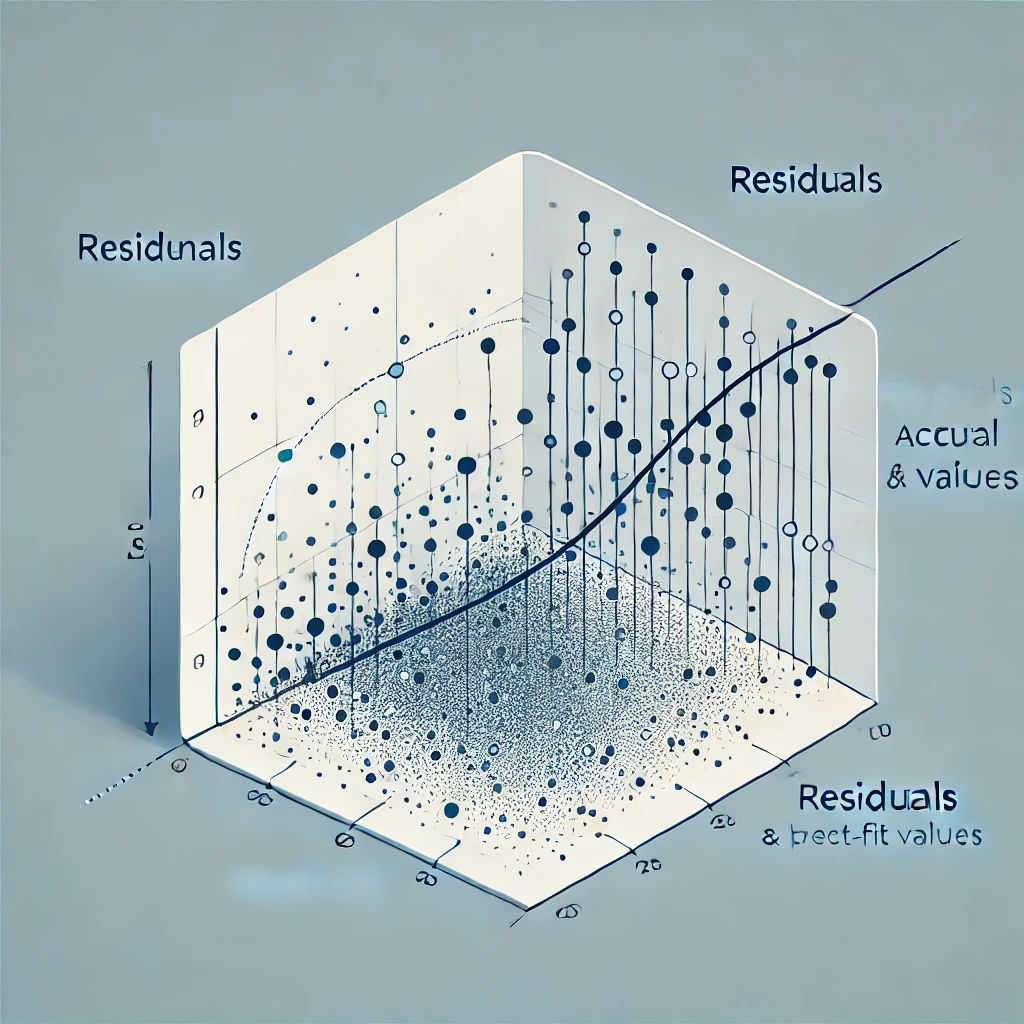Assume
$$ Y_i = \beta_o + \beta_1X_i+\varepsilon_i $$ , for given $n$ observerd data $(x_i, Y_i)$, $\forall i=1~n$
Note that:
$$ Y_i \mid X_i=x_i ~ N(\beta_o+\beta_1X_1, \sigma^2) $$
$\therefore$
$$ E_{Y \mid X}[Y_i \mid X_i =x_i]=\beta_o+\beta_1X_1$$
In vector notation:
$$ Y_i = x^T_i\beta + \varepsilon_i $$
where
- $ x_i=(1, X_1, …, X_n)^T $
And for $ Y = (Y_1, …, Y_n)^T $, We have: $$ Y = X\beta + \varepsilon $$
where
-
$ X = \begin{bmatrix} 1 & X_1 \\ 1 & X_2 \\ \vdots & \vdots \\ 1 & X_n \end{bmatrix} $
-
$ Y = \begin{bmatrix} Y_1 \\ Y_2 \\ \vdots \\ Y_n \end{bmatrix} $,
$ \begin{bmatrix} Y_1 \\ Y_2 \\ \vdots \\ Y_n \end{bmatrix}= \begin{bmatrix} 1 & X_1 \\ 1 & X_2 \\ \vdots & \vdots \\ 1 & X_n \end{bmatrix}\begin{bmatrix} \beta_0 \\ \beta_1 \end{bmatrix}+\varepsilon $
$ Y~N(X\beta, \sigma^2) $ given a joint p.d.f. for $Y$ given $X$ of the form: $$ f_y(y; \beta, \sigma^2)= \frac{1}{\sqrt 2\pi\sigma^2}e^{\frac{(y-X\beta)^T(y-X\beta)}{-2\sigma^2}} $$ consider the maximization for $\beta$ indicates that: $$ min \left[(y-X\beta)^T(y-X\beta)\right] $$ and thus: $$ \begin{aligned} (y - X\beta)^T (y - X\beta) &= (y^T - (X\beta)^T)(y - X\beta) \\ &= (y^T - \beta^T X^T)(y - X\beta) \\ &= y^T y - y^T X\beta - \beta^T X^T y + \beta^T X^T X \beta \\ &= y^T y - 2y^T X\beta + \beta^T X^T X \beta \\ \frac{\partial}{\partial\beta} (y^T y - 2y^T X\beta + \beta^T X^T X \beta) &= -2yT^X+2X^TX\beta \overset{\text{Let}}{=}0 \\ X^TX\beta &= y^TX \end{aligned} $$ since $(X^TX)^{-1}$ exists
$\therefore$ $$ \beta = (X^TX)^{-1}X^Ty $$
